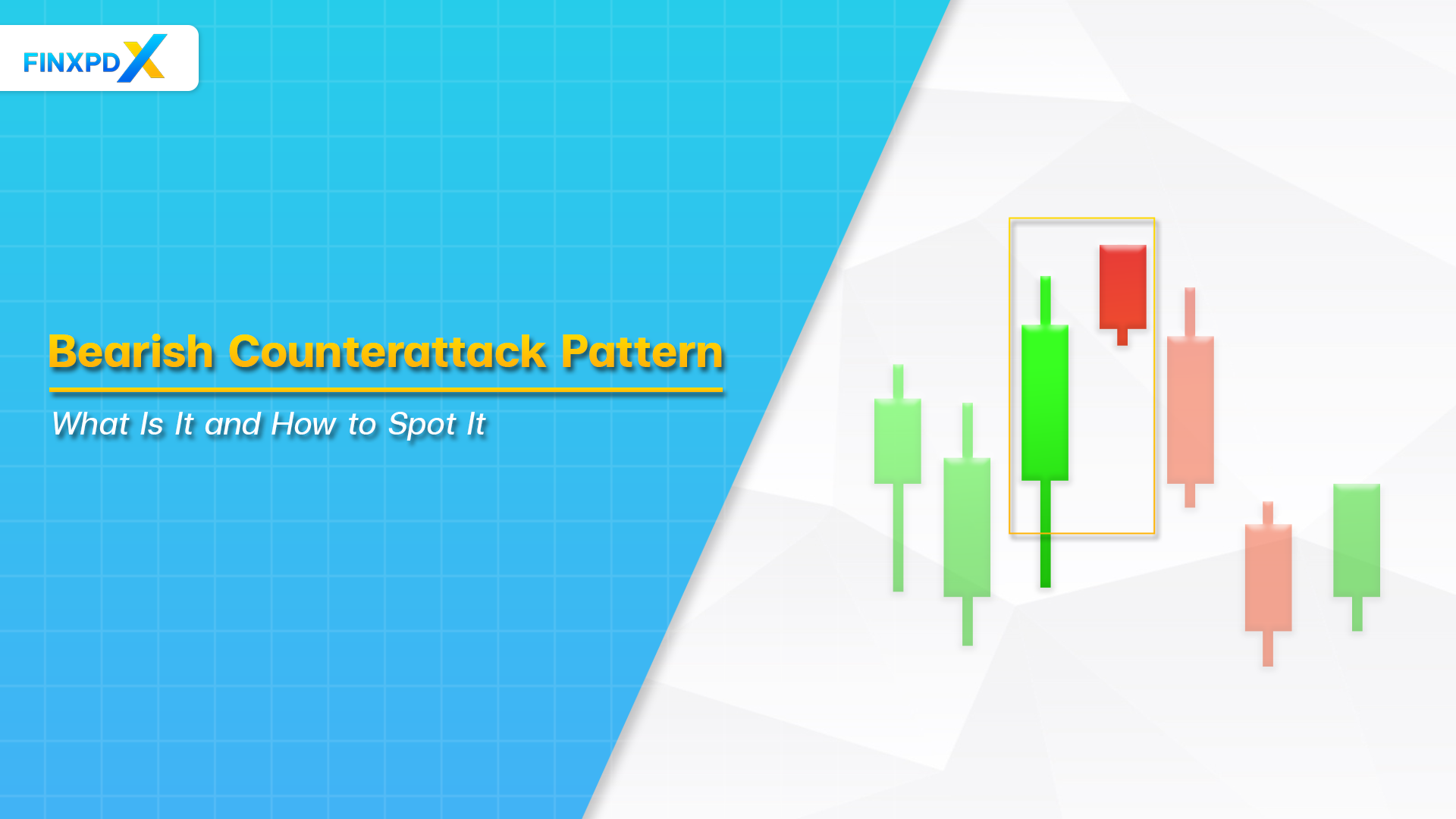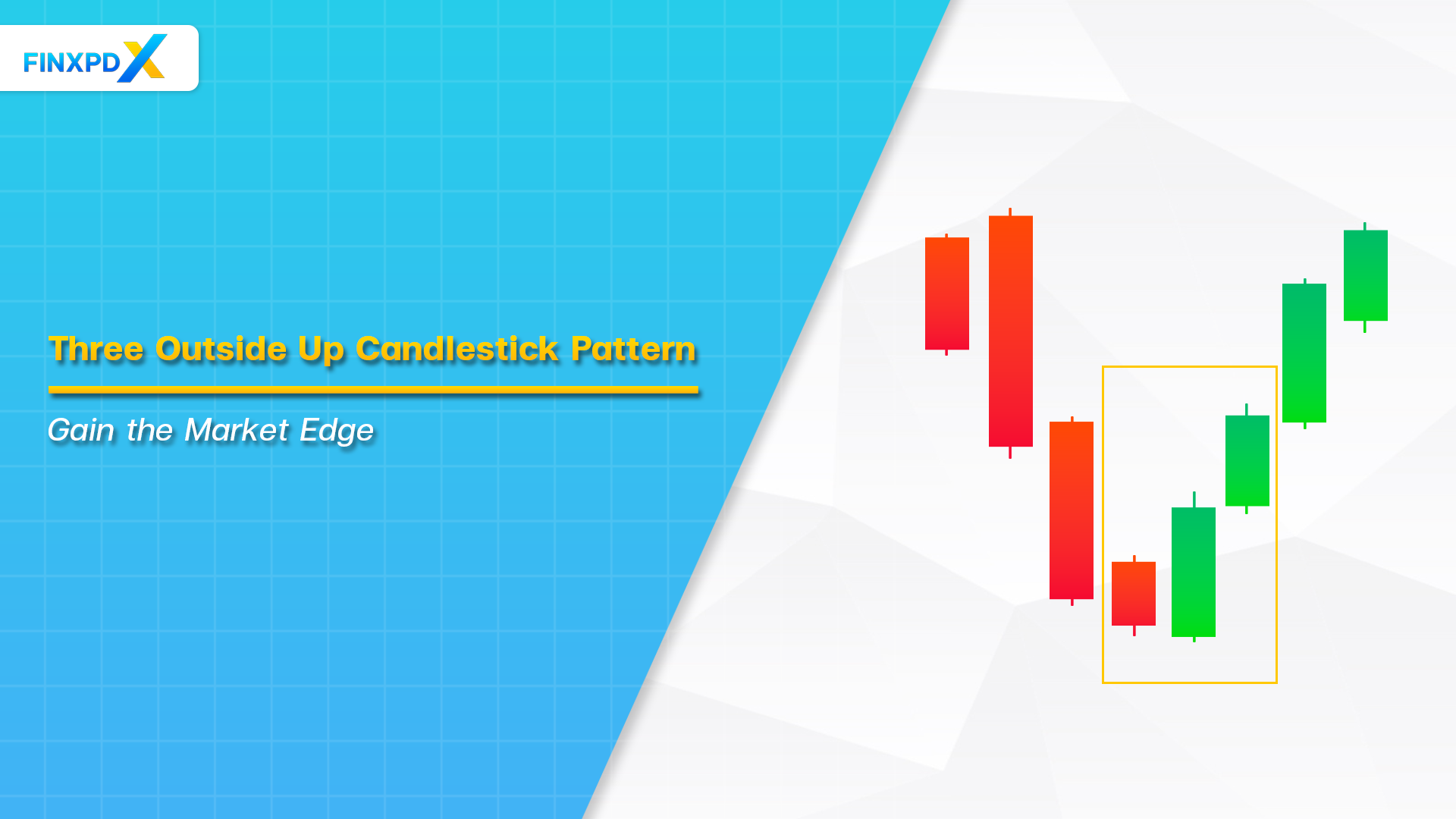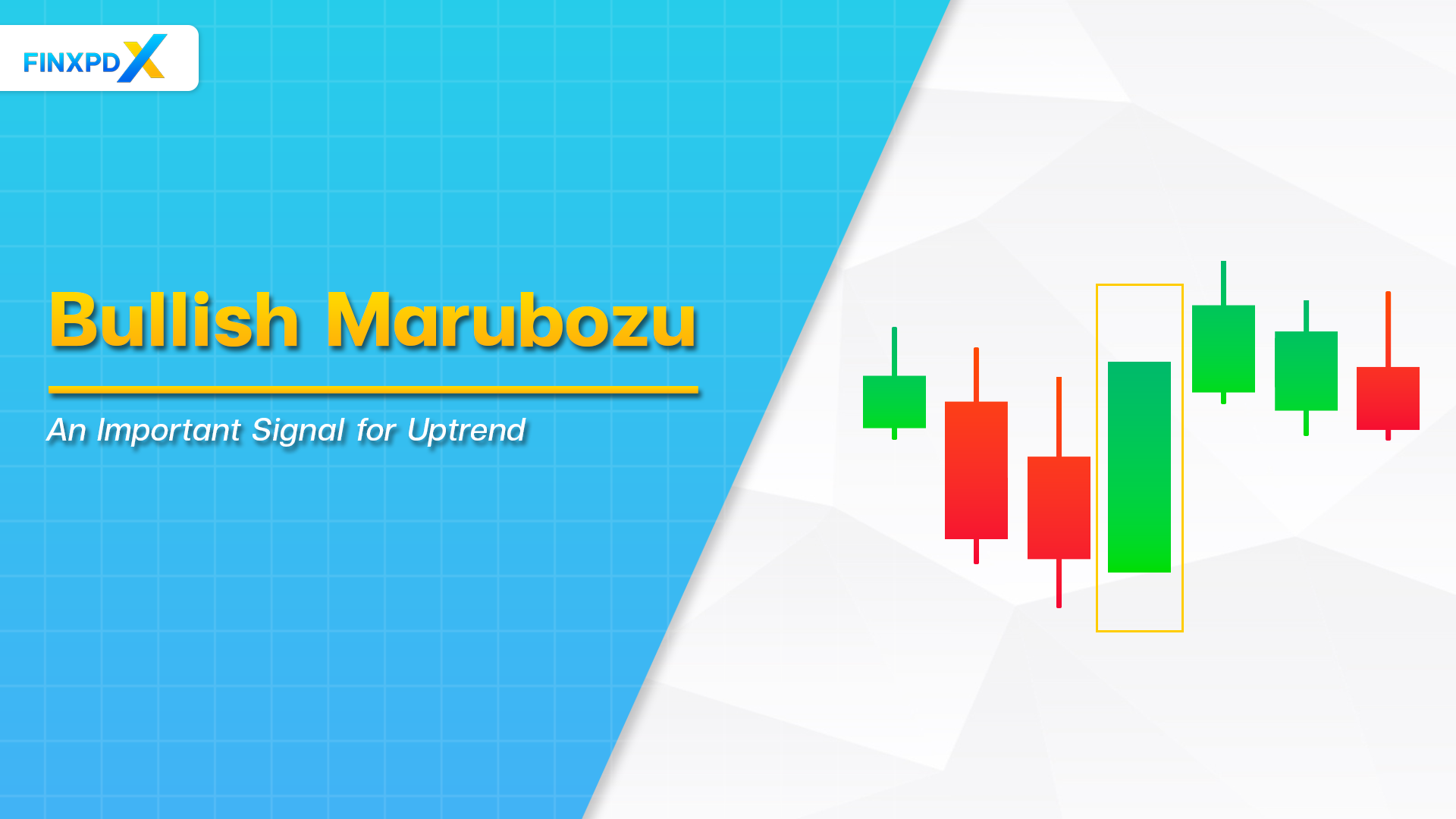In the world of technical analysis, identifying potential market reversals is important for traders seeking to maximize their profits and minimize their losses. One of the most reliable patterns for spotting these reversals is candlestick patterns, especially hammer candlestick. Recognized for its distinctive shape and significant implications, the hammer candlestick can signal a potential bullish reversal after a downtrend, offering traders a prime opportunity to enter the market.
This article will explore the hammer candlestick pattern, its characteristics, types, and identification methods. It also examines the pattern’s limitations and compares it with the Doji. By mastering it, traders can effectively spot reversal opportunities and refine their trading strategies.
What Is a Hammer Candlestick?
A hammer candlestick pattern is a specific type of candlestick pattern used in technical analysis to indicate a potential reversal in a downtrend. It appears at the bottom of a downward trend and is characterized by a small body at the upper end of the trading range with a long lower shadow. The length of the lower shadow is at least twice the length of the body. This pattern suggests that despite the sellers pushing prices down significantly during the trading period, strong buying pressure drove the prices back up near the opening price by the end of the period, indicating a possible reversal to the upside.
Key Takeaways
- A hammer candlestick is a bullish reversal pattern in technical analysis.
- A hammer typically forms at the end of a downtrend, signaling a potential price reversal.
- The hammer has a small body, a long lower shadow, and little or no upper shadow.
- The long lower shadow indicates strong buying pressure after an initial sell-off.
- Recognizing hammer candlesticks helps traders spot potential entry points for long positions.
Types of Hammer Candlestick
Hammer candlesticks have two main types, each indicating a potential reversal in a downtrend. Both types signal a possible shift in market sentiment from bearish to bullish.
1. Hammer Candlestick
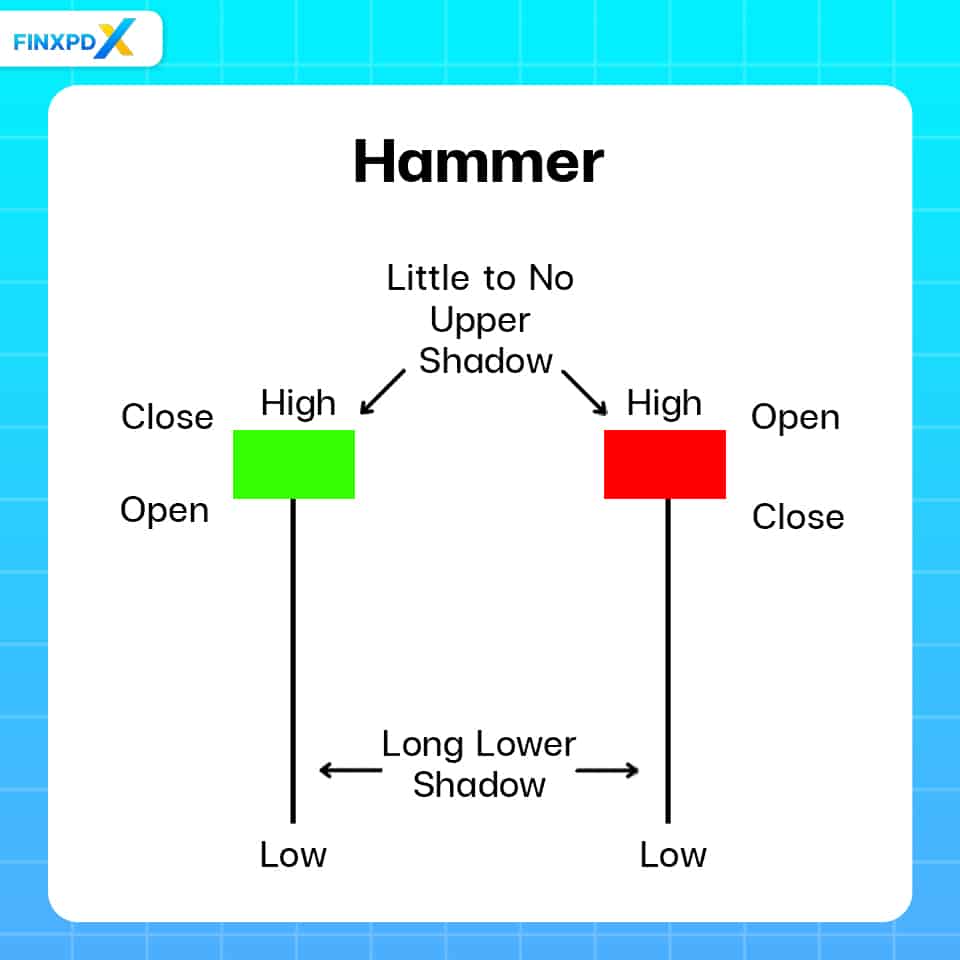
Definition: The hammer candlestick pattern appears at the bottom of a downtrend and is characterized by a small body with a long lower shadow and little to no upper shadow. The lower shadow should be at least twice the length of the body.
Significance: This pattern suggests that although sellers initially drove the price down during the trading period, buyers regained control and pushed the price back up near the opening price, indicating a potential bullish reversal.
Example: If a stock opens at $50, drops to $45 during the day, but then closes at $49, it forms a hammer candlestick.
2. Inverted Hammer Candlestick
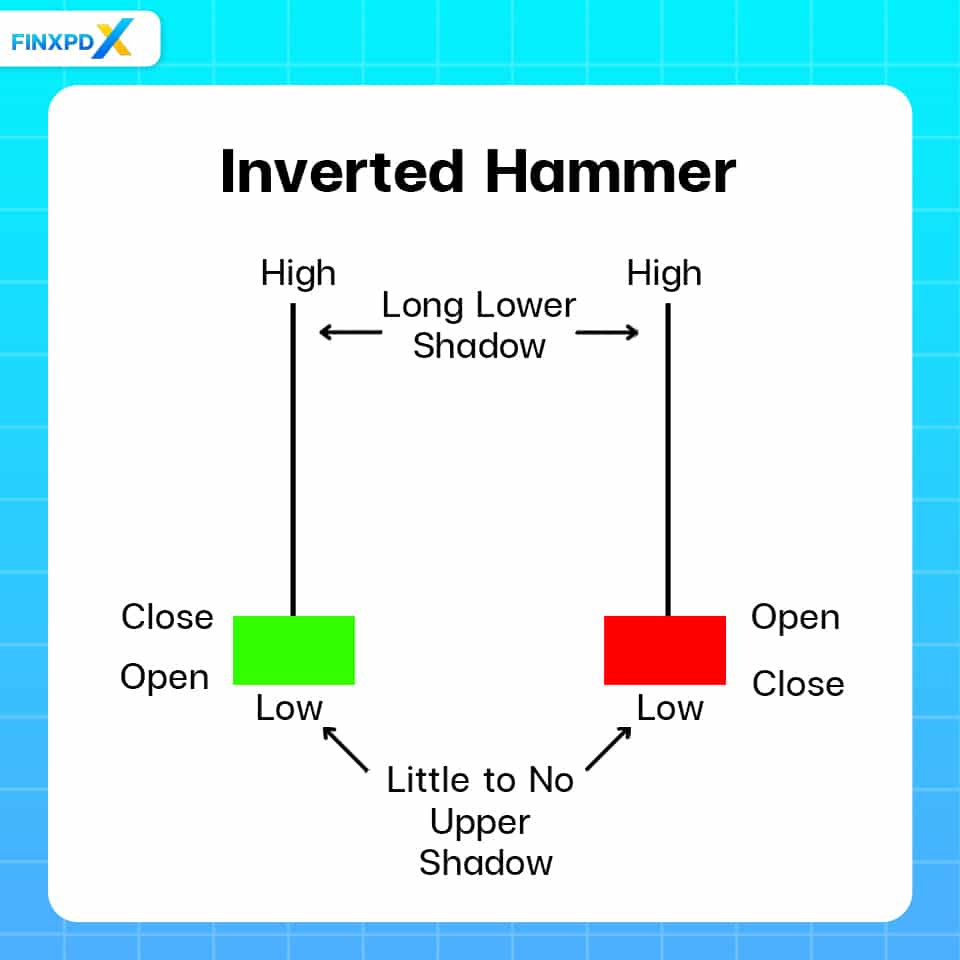
Definition: The inverted hammer candlestick pattern also appears at the bottom of a downtrend but is characterized by a small body with a long upper shadow and little to no lower shadow. The upper shadow should be at least twice the length of the body.
Significance: This pattern indicates that buyers tried to push the price higher during the trading period, but sellers regained control, pushing the price back down near the opening price. Despite this, the buying pressure indicates a potential bullish reversal.
Example: If a stock opens at $50, rises to $55 during the day, but then closes at $51, it forms an inverted hammer candlestick.
Identifying a Hammer Candlestick in Charts
Identifying a hammer candlestick in charts involves looking for specific features that distinguish this pattern. Here is a simple technique for identifying a hammer candlestick:
1. Recognize the Candlestick’s Shape
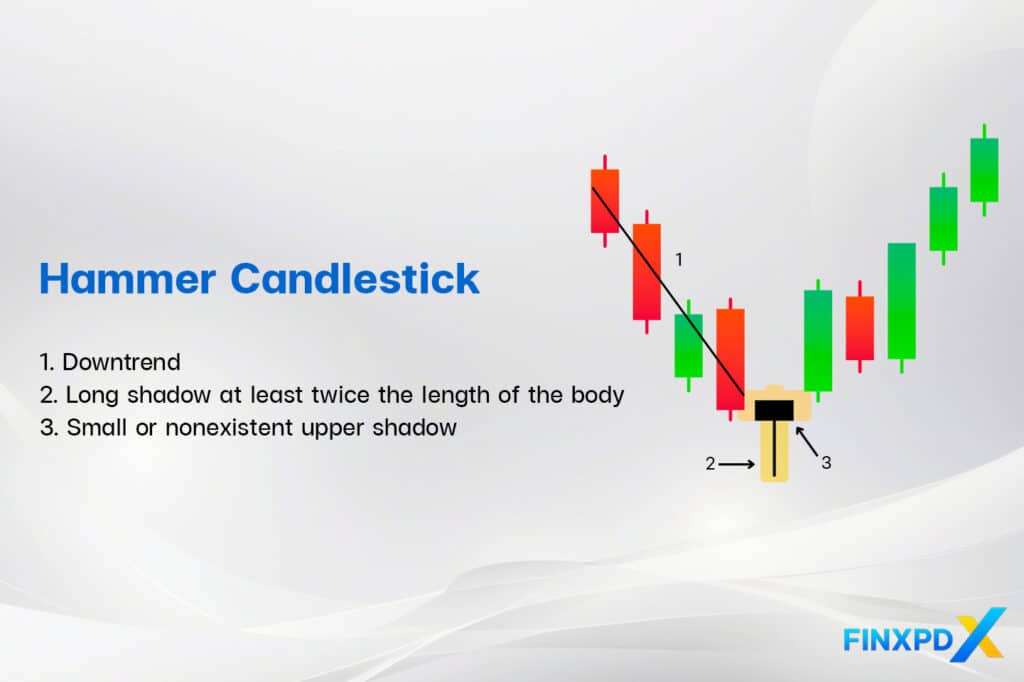
Its key features are the following:
- Small Real Body: The candlestick’s body is small and located at the upper end of the trading range.
- Long Lower Shadow: The shadow (or wick) below the body should be at least twice the length of the body.
- Minimal Upper Shadow: The upper shadow should be very small or nonexistent.
2. Confirm the Location in the Trend
The hammer candlestick should appear after a downtrend, as this context is important for signaling a potential reversal from bearish to bullish sentiment.
3. Assess the Candlestick’s Color
While the body color (green or red) is less important, a green body can indicate a stronger potential reversal, showing the closing price is higher than the opening price.
4. Examine the Length of the Lower Shadow
The lower shadow should be at least twice the length of the real body. This long shadow indicates that sellers pushed the price down significantly, but buyers regained control, pushing the price back up.
5. Analyze the Trading Volume
A higher volume during the formation of the hammer candlestick ensures credibility to the reversal signal. It suggests stronger buying interest.
Limitations of Hammer Candlestick
Despite its usefulness, the hammer candlestick has the following limitations:
- Confirmation Required: A hammer candlestick alone does not guarantee a trend reversal. Subsequent bullish price action is needed to validate it.
- No Price Target: The pattern does not provide a specific price target for the potential reversal, requiring other tools for determining exit points.
- Context-Dependent: The hammer pattern is most reliable at the bottom of a downtrend and may not be valid in other market conditions.
- False Signals: In highly volatile markets, hammer patterns can occur frequently without indicating a true reversal.
- Additional Indicators Needs: It will be more effective with other technical analysis tools, rather than relying solely on the hammer candlestick.
The Differences Between a Hammer Candlestick and a Doji
This comparison table will highlight the distinct features and uses of hammer candlesticks and Doji patterns, helping traders recognize and interpret these patterns accurately.
| Feature | Hammer Candlestick | Doji Candlestick |
|---|---|---|
| Appearance | Small body with a long lower shadow, little to no upper shadow | Small body with upper and lower shadows nearly equal |
| Shape | Resembles a hammer (T-shape) | Cross-like or plus sign-like |
| Body Size | Small, positioned at the upper end of the trading range | Very small, indicating opening and closing prices are almost the same |
| Shadow Length | Lower shadow at least twice the length of the body | Upper and lower shadows can vary but are generally long and equal |
| Market Context | Appears at the bottom of a downtrend | Can appear at the top, bottom, or middle of a trend |
| Indication | Signals a potential bullish reversal | Indicates indecision or potential reversal/continuation, depending on context |
| Signal Strength | Stronger reversal signal when followed by a bullish confirmation candle | Indicates market indecision, strength depends on subsequent price action |
| Common Variants | Inverted Hammer (similar pattern but with a long upper shadow) | Various types like Gravestone Doji, Dragonfly Doji, Long-Legged Doji |
Conclusion
To sum up, the hammer candlestick is a valuable tool in technical analysis for identifying potential bullish reversals at the end of downtrends. The hammer candlestick is characterized by a small body and a long lower shadow. There are two main types of hammer candlesticks, the standard hammer and the inverted hammer, both signaling possible market reversals.
While the hammer candlestick is highly useful, it also has limitations, such as confirmation required and being context-dependent. By understanding and applying the principles of the hammer candlestick pattern, traders can enhance their ability to spot reversal opportunities and improve their overall trading strategies. However, you can read about the 35 candlestick patterns on our website if you’re interested in learning about the other types.
Click the button below to download PDF
FAQs
A hammer candlestick is a chart pattern that signals a potential reversal in a downtrend. It has a small body and a long lower shadow, suggesting that buyers are gaining control after sellers pushed the price lower.
The hammer candlestick has a small real body at the upper end, a long lower shadow at least twice the length of the body, and little to no upper shadow. It appears after a price decline, indicating a potential bullish reversal.
Yes, a hammer candlestick can appear in any timeframe, from intraday to daily, weekly, or monthly charts. Its significance remains consistent across different timeframes as an indicator of potential reversals.
While a hammer has a long lower shadow and small body at the top, an inverted hammer has a long upper shadow and small body at the bottom. Both indicate potential reversals, but in different contexts.
Traders should combine hammer candlestick analysis with other technical tools like moving averages, RSI, MACD, and support/resistance levels. This combination enhances the accuracy of predictions and confirms potential reversals. Additionally, using volume analysis can help validate the strength of the hammer signal.
Related Articles:
- What Is Bullish Candlestick Patterns & How To Use It?
- The Cup and Handle Pattern: Important Technical Study
- Shooting Star Candle: A Useful Indicator in Trading Charts
- Three Inside Down Candlestick Pattern: How to Find Sell Sign
Read more: Forex




